
Kathy Selden: I said some awful things that night, didn't I?


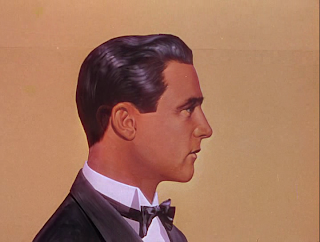
Don Lockwood: No. I deserved them. But I must admit I was hurt by them. So hurt in fact that I haven't been able to think about anything but you ever since.

Gene Kelly in "Singin' in the Rain": This month marks the 60th
anniversary of its release in U.S. theaters (April, 9, 1952).

Gene Kelly and Debbie Reynolds as Don Lockwood and Kathy Selden in "Singin' in the Rain" (1952)

Don Lockwood's encounter with Kathy Selden (Debbie Reynolds) after the premiere continues the demystification of his stardom. Escaping from a crowd of zealous fans, he leaps onto the top of a streetcar and jumps into her convertible. Then, in trying to impress her, Don carries over the egotistical persona that he displayed for his public at the premiere. Unimpressed when she learns his identity, Kathy dismisses Don's acting for its inauthenticity. "The personalities on the screen just don't impress me," she declares.
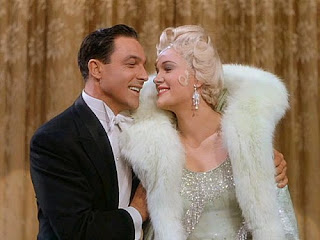
Since these opening scenes satirize Don's star image, highlighting its fabrication along with Lina Lamont's (Jean Hagen), in order subsequently to validate his transformation into a song-and dance- man just like Gene Kelly, "Singin' in the Rain" must also depict the greater authenticity of that other kind of stardom. As Stephan Prock observes, despite the visual demystification of "Don's revisionist and misleading narrative" when he recounts his biography at the premiere, "the film becomes increasingly caught up in revealing the falseness, the very constructedness, of the 'feminine' and the inability of women in the film to present or control their own representation".
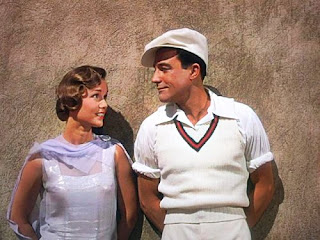
For instance, when he and Kathy meet again several weeks later, Don reveals that he cannot tell her how he genuinely feels. "I'm such a ham," he confesses. "I'm not able to without the proper setting." So he goes into the number "You Were Meant for Me," which measures the sincerity of his singing and dancing against the insincerity of his phony speech and hammy acrobatics.

Frank Sinatra, Kathryn Grayson and Gene Kelly in "Anchors Aweigh" (1945) directed by George Sidney
The setup of this number borrows from the similar one on a soundstage in "Anchors Aweigh", but whereas the swashbuckler fantasy ballet in that earlier film shows the dancing matinee idol beneath the inarticulate ordinary Joe, this time out it proves just the opposite. Don introduces his love song by calling attention to its theatricalized setting on a soundstage, using studio technology to simulate a suitable romantic atmosphere.

What is immediately striking is how the Kelly numbers in "Singin' in the Rain" differ from those in his other musicals. Absent are the spectacular solos for the star that serve as camp highpoints: there is no equivalent of "The Worry Song" or "Niña."

The title number, while Kelly's most famous, is perhaps the least innovative solo of his entire career, an unabashed declaration of joy more unified in style, and much simpler in its execution (as Kelly himself commented), than any others that come to mind. Further distinguishing "Singin' in the Rain" from the 1940's musicals is the greater extent to which Kelly is partnered in his dances.

The version of the title song performed before the credits, as Patricia Mellencamp notices, includes all three stars singing and dancing together, unlike the finale at the end, which briefly pairs Kelly and Reynolds in "You Are My Lucky Star," the lyric punning on their characters' future coupling, professional as well as romantic.

"Singin' in the Rain" achieves its closure, Mellencamp points out, by pushing O'Connor's character, Cosmo, out of the story along with Lina. Always marginalized as Don's best friend who has no private life or professional ambition of his own, Cosmo moves into the orchestra pit to conduct the musical accompaniment of "You Are My Lucky Star" when Don and Kathy reunite and then disappears.

Underscored by a heavenly chorus continuing the song, the final shot shows Don and Kathy beneath a billboard advertising their teaming in a new "Singin' in the Rain" which, unlike the "Singin' in the Rain" we have been watching for nearly the past two hours, does not feature a star trio.
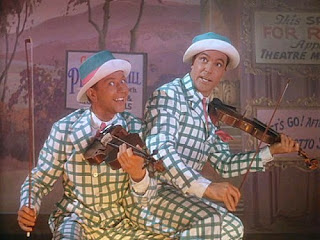
Much like "Anchors Aweigh", in short, "Singin' in the Rain" begins with Don already coupled-and "fit as a fiddle," thank you-with his life-long friend, constant companion, first dance partner, and collaborator: Cosmo. The buddy, more than Lina, poses the serious obstacle to the normative heterosexual masculinity that Don comes to represent in the film's closure when he and Kathy star in their own version of "Singin' in the Rain".

"Singin' in the Rain" as a set piece that characterizes the quintessential Gene Kelly musical, openly heterosexualizes his dancing by pairing him with an equally expert female dancer trained in classical ballet: Vera-Ellen in "On the Town", Leslie Caron in "American in Paris", Cyd Charisse in "Singin' in the Rain". But in each film this number just as repeatedly depicts heterosexual loss, recounting an inner narrative of Kelly's losing the woman with whom he dances.

In "Broadway Ballet," the hoofer fails to sustain his erotic rapport with the seductive vamp played by Cyd Charisse; both times they meet in this number, after they dance up a storm, the vamp leaves the hoofer for her gangster-lover. When the vamp rebuffs him, all the hoofer has to console him at the ballet's end is his success as a dancer, but that success is considerable since he is now a bona fide star.

Cyd Charisse may have been needed for "Broadway Ballet" because Debbie Reynolds was not a trained classical dancer, but the substitution only makes the pattern clearer: whereas the camp female figure is punished (Lina) and redeemed (Kathy) in the plot, she is completely silenced and eroticized as pure spectacle in the ballet (Charisse). Prior to Charisse's entrance, the first part of "Broadway Ballet" is actually more in keeping with Kelly's camp solos from the 1940's musicals.

Arriving in New York, his bespectacled young hoofer is decked out as the primary object of visual interest in his own right, what with his straw hat, yellow vest, reddish tie, and pink-and-blue checked jacket. Don's stardom as a song-and-dance man in "Singin' in the Rain" is not fully authenticated until his dancing is overtly heterosexualized in "Broadway Ballet" through the duet with Charisse, which engenders it as a more traditionally masculine activity.

"...With regard to the vamp dance, a note from Breen mentioned an "understanding" that the dance "will be shortened on the basis of the elimination discussed." Although there is no record of how and where it was shortened, careful observation of the vamp dance shows an abrupt cut when Charisse is wrapped around Kelly, indicating that a particular pose or sequence that the Breen office found objectionable might have been cut at this point." -from "Singin' In The Rain: The Making Of An American Masterpiece" (2009) by Earl Hess and Pratibha Dabholkar

Kelly (clad all in black) and Charisse (in white) dance a conventional pas de deux which, in its arty seriousness, belies the jauntier tempo and wittier tone of the number as a whole but more firmly establishes the gender asymmetry of their duet. Unlike their first meeting in the speakeasy, this time Kelly lifts Charisse a lot more and, instead of wrapping her legs around him seductively or leaping into his arms, she falls passively to his feet; he also keeps his back to the camera during much of their dancing, and when he faces front, the veil wrapping around the two of them obscures his body, but not hers. Thus, even though the hoofer loses the vamp, at the finish of "Broadway Ballet" Kelly's close-up confirms the authenticity of the star who knows he's "gotta dance!" - and can do it in the right way.

Ironically enough, though, "Singin' in the Rain" proved to be more of a valediction to Kelly's career than a benediction. It was the last of his big hits, and at the time of its release was eclipsed by the greater prestige of "An American in Paris". That situation has of course been reversed with the growing reputation of "Singin' in the Rain" as the greatest movie musical of all time. It is in perfect accord with the film's revisionist view of what his star image ought to represent: not the matinee idol's gender-sexual indeterminacy, but the ordinary Joe's heterosexual normality; his own partial authorship of "Singin' in the Rain" gave him greater leave to insert his views of dance as a "man's game."

Vera-Ellen and Gene Kelly as Ivy and Gabey in "On the Town" (1949) directed by Stanley Donen & Gene Kelly

Comden's and Green's more heterosexualized understanding of the Kelly persona, already evident in "On the Town"; Some twenty years after its release, a BBC interview with Kelly could simply treat "Singin' in the Rain" as if it were telling his life story. "Much of the film Singin' in the Rain is drawn from incidents in Kelly's own life or known to him," the interviewer, Gavin Millar, says in voiceover. "And the image of the small town boy looking for both success and culture runs through most of his films."

As Kelly's voice describes his background-mentioning, for instance, how he and brother Fred first did a dancing act together-the documentary shows "Fit as a Fiddle," the vaudeville number Kelly performs with Donald O'Connor in the biographical montage. "The Broadway Ballet" is likewise shown to portray Kelly's later career. This number "says it all. An eager young hoofer from out of town. The first job in a speakeasy. In his dreams he will advance from vaudeville to modern dance; and like Gene Kelly, and the image of dance itself in America, he's going up in the world."
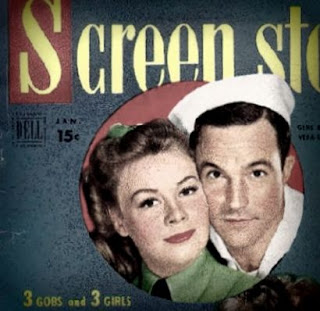
Throughout Kelly's career, the extrafilmic commentary approached his dancing as a problem by implying that his profession undermined his outwardly virile physical appearance. For instance, a short magazine piece about Kelly recounted the following off-screen incident in 1946: It was lunchtime, so he ducked into one of the thousands of hamburger joints that dot New York's sidestreets, and ordered one medium rare. "Pardon me," the waitress breathed, "but aren't you Gene Kelly?" The sailor glared, and shoved his cap further over his bright brown eyes, very tough-like. "What?" snorted Gene. "Me, a sissy dancer? I should say not! I'm a sailor!" "Well, I'm sorry," she muttered, "I didn't think he'd eat here, anyway!" Referring to Kelly's leave of absence from Hollywood when he joined the navy toward the end of World War II, this anecdote has the ostensible purpose of showing that he is not "a sissy dancer," and it gives the star himself the opportunity of voicing the disclaimer.

Indeed, "The Broadway Ballet" works so convincingly to heterosexualize Gene Kelly and Don Lockwood alike because it characterizes the hoofer and the vamp through the narrow view of sexual difference. But as importantly, the film's other dance numbers retain disruptive traces of Kelly's provocative 1940's image, an image of camp masculinity still resonant in the biker number from "Les Girls" and still powerful enough to continue shaping the extrafilmic commentary after his MGM career in the repeated insistence that he is not and has never been a sissy dancer.

Taina Elg, Kay Kendall, Gene Kelly and Mitzi Gaynor in "Les Girls" (1957) directed by George Cukor
The camp dialectic of his screen presence as a dancer "with balls" at the height of his film career stands out in bold contrast with what he came to symbolize decades afterward as the MGM poster boy. "Singin' in the Rain" still registers that dialectic but covers it over by using Don Lockwood, that ersatz Gene Kelly, as its camp alibi.
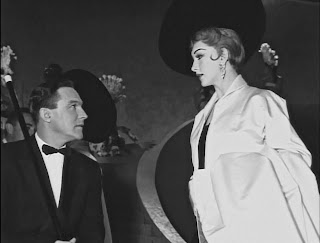
Jack Cole (director of choreography in "Les Girls") criticized Kelly for using dance to project a reassuring image of "men dancing in the right way." What this "right way" required of Kelly was vividly recalled by his collaborator, Stanley Donen:

"I remember being impressed by Gene as soon as I saw him on the stage. He had a cockiness, a confidence in himself, and a ruthlessness in the way he went about things that, to someone as young and green as myself, was astonishing. I also found him cold, egotistical and very rough. And, of course, wildly talented. He was the only song and dance man to come out of that period who had balls. There were good dancers around, like Don Loper, Jack Cole, Gower Champion, Charles Walters, Dan Dailey -even Van Johnson. But they somehow weren't as dynamic as Gene. No one was. That's why he was such an explosion on the scene." ("Gene Kelly" biography by Clive Hirschhorn, 1974)

"What I wanted to do," Kelly explained, "was dance... for the common man. The way a truckdriver would dance when he would dance, or a bricklayer, or a clerk, or a postman... I grew up with all these kind of peoples, you know" (Reflections on the Silver Screen). After his death in 1996 the obituaries evoked the same virile image. According to the headlines, the star was "the athlete who danced our dreams" (Matthews).

Choreographer Twyla Tharp made the same point in a Los Angeles Times memorial, claiming that "Gene Kelly is rightly credited with bringing a massive and much needed dose of vitality, masculinity and athleticism to American dance." John McCullough's criticized the Kelly image as "an image of hysteria and anxiety" about patriarchal masculinity. -"Incongruous Entertainment: Camp, Cultural Value, and the MGM Musical" by Steven Cohan (2005)

"When asked about making film musicals, Gene Kelly once said, “You are commenting on the human condition no matter what you do. A musical may be light and frivolous, but by its very nature, it makes some kind of social comment.” Indeed. The musical did then, and it does now. And so does Gene Kelly, in ways he probably never imagined".
Source: www.kellimarshall.net
 Gene Kelly as Leo Gogarty and Marie McDonald as Margaud Morgan in "Living in a Big Way" (1947) directed by Gregory La Cava
Gene Kelly as Leo Gogarty and Marie McDonald as Margaud Morgan in "Living in a Big Way" (1947) directed by Gregory La Cava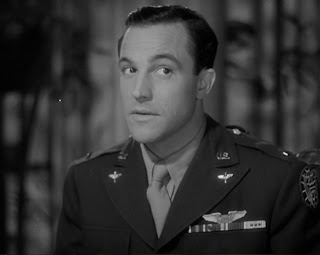 Gene Kelly didn't really want to make "Living in a Big Way". Since his release from the Navy, MGM had had little for him to do. The studio was focusing on bigger male stars who had been kept off the screen longer by military duty. In addition, executives weren't sure if the brash persona he had already developed in films like his debut, "For Me and My Gal" (1942), and "Anchors Aweigh" (1945) would play well in peacetime.
Gene Kelly didn't really want to make "Living in a Big Way". Since his release from the Navy, MGM had had little for him to do. The studio was focusing on bigger male stars who had been kept off the screen longer by military duty. In addition, executives weren't sure if the brash persona he had already developed in films like his debut, "For Me and My Gal" (1942), and "Anchors Aweigh" (1945) would play well in peacetime. Gregory La Cava's improvisatory approach was a boon to Kelly. When the dancing star suggested adding some musical numbers to the film, La Cava was all too willing. Kelly and Donen staged a romantic duet for the courtship scenes with McDonald, a comic dance with a dog who, like Kelly, has been rejected by the leading lady, and a lengthy sequence in which Kelly seemingly improvises an athletic dance to entertain some children while he's building a house.
Gregory La Cava's improvisatory approach was a boon to Kelly. When the dancing star suggested adding some musical numbers to the film, La Cava was all too willing. Kelly and Donen staged a romantic duet for the courtship scenes with McDonald, a comic dance with a dog who, like Kelly, has been rejected by the leading lady, and a lengthy sequence in which Kelly seemingly improvises an athletic dance to entertain some children while he's building a house.  The dog dance gave Kelly a chance to choreograph around the character's persona, something he and Donen would explore further in the "Day in New York" ballet for On the Town. The improvisatory feel of the house-building routine would become a Kelly staple in films like "Summer Stock" (1950), "An American in Paris" (1951) and "Singin' in the Rain."
The dog dance gave Kelly a chance to choreograph around the character's persona, something he and Donen would explore further in the "Day in New York" ballet for On the Town. The improvisatory feel of the house-building routine would become a Kelly staple in films like "Summer Stock" (1950), "An American in Paris" (1951) and "Singin' in the Rain." When the film was finally finished, it did poorly at the box office. Later critics have noted that La Cava's directions revealed a comic dimension to Kelly's acting that had not been exploited well before and that the film fits well with the director's other comic treatments of class warfare.
When the film was finally finished, it did poorly at the box office. Later critics have noted that La Cava's directions revealed a comic dimension to Kelly's acting that had not been exploited well before and that the film fits well with the director's other comic treatments of class warfare. Screenplay: Gregory La Cava, Irving Ravetch
Screenplay: Gregory La Cava, Irving Ravetch Gene Kelly is just so damn beautiful it hurts. He’s also such a great actor. In this film he is allowed a great range of emotions, as well as some truly stunning dance routines – choreographed by himself and Stanley Donen.
Gene Kelly is just so damn beautiful it hurts. He’s also such a great actor. In this film he is allowed a great range of emotions, as well as some truly stunning dance routines – choreographed by himself and Stanley Donen. The film begins during the war – when Kelly’s Leo Gogarty meets Marie McDonald’s Margo at a dance and the two get themselves into one of those hasty “war marriages.” They also share a dance scene that is so hot they might have well have been having sex right there. The film then cuts to three years later, when the war is over and soldiers are returning home. As you can imagine, chaos ensues.
The film begins during the war – when Kelly’s Leo Gogarty meets Marie McDonald’s Margo at a dance and the two get themselves into one of those hasty “war marriages.” They also share a dance scene that is so hot they might have well have been having sex right there. The film then cuts to three years later, when the war is over and soldiers are returning home. As you can imagine, chaos ensues. Apparently MGM wanted to use this film to launch McDonald as a Lana Turner type star. You can see they did a pretty good job with the ice blonde hair and styling, but as charming as McDonald is, she just doesn’t have “it” and Kelly outshines her so consistently it is hard to watch sometimes. Source: cinema-fanatic.com
Apparently MGM wanted to use this film to launch McDonald as a Lana Turner type star. You can see they did a pretty good job with the ice blonde hair and styling, but as charming as McDonald is, she just doesn’t have “it” and Kelly outshines her so consistently it is hard to watch sometimes. Source: cinema-fanatic.com





















































